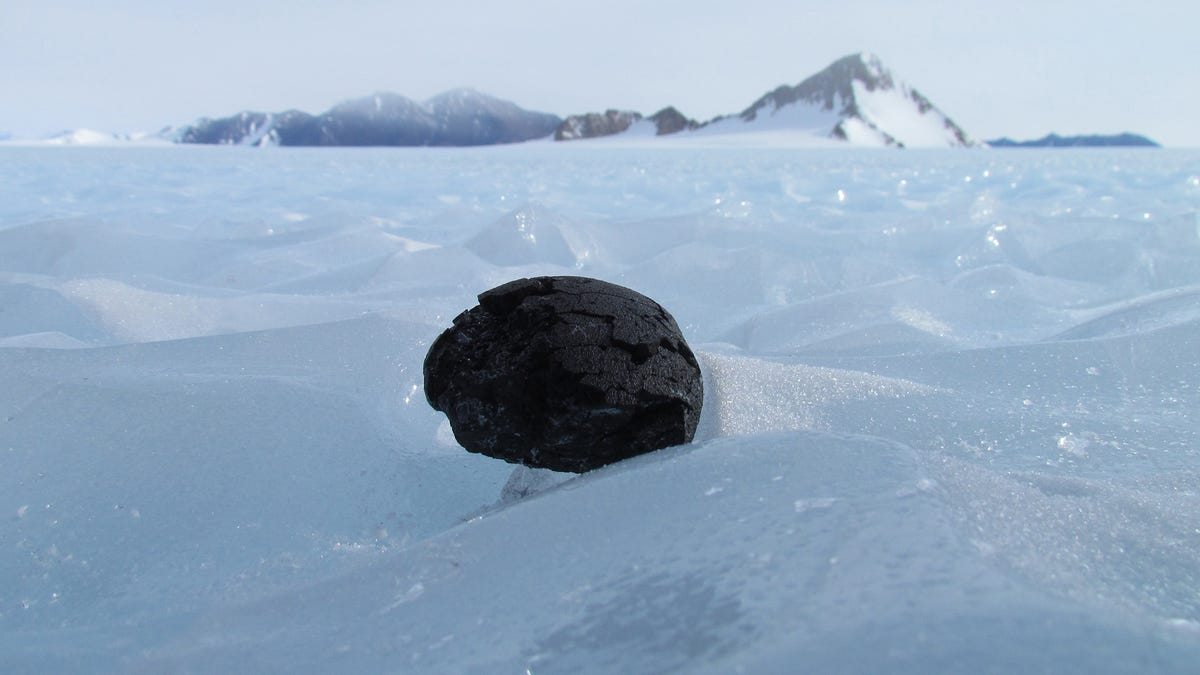Antarctica may hide cosmic secrets in a layer of meteorites just below its surface
The majority of meteorites have been collected in Antarctica, but an even bigger treasure trove holding the solar system's mysteries may be trapped within reach.
Sending astronauts to an asteroid could be cool, but some of the secrets of the solar system may be hidden just barely out of sight at the bottom of our planet.
Scientists are salivating over a potential layer of meteorites trapped less than 2 feet below the surface of Antarctic ice fields and the insights they may hold to the early solar system.
Though meteorites fall pretty evenly over the entire globe, it's estimated that more than two-thirds of those collected have come from the southern continent. This is partly because it's so easy to spot the dark space rocks resting on the white surface of the landscape. The way the ice on the continent thaws, refreezes and flows also plays a role by basically pushing the meteorites toward the surface into concentrated regions known as "meteorite stranding zones."
The type of meteorites that have been found over the years on Antarctica, however, have not been as iron-rich as the fallen space rocks found across the rest of the world. A team at the University of Manchester has shown in a paper published in Nature Communications on Tuesday that more metallic meteorites are likely hiding just below the surface.
Using lab experiments and mathematical models, the team showed iron-rich meteorites could be absorbing more heat from the sun, causing them to warm the surrounding ice. This allows them to repeatedly sink a foot or so, making them harder to see but still relatively easy to reach.
These meteorites may lie there in the ice in a perfectly preserved state for thousands of years, a kind of cosmic history book literally frozen in time.
Dr. Geoff Evatt from the University of Manchester team says in a statement that this hidden reserve of meteorites could play a major role in furthering our understanding of the solar system's formation.
"The challenge is now set: to be the first team to locate this reserve of meteorites and retrieve samples from it."
Believe it or not, the team may have some competition at the bottom of the Earth to find those space-sicles. A project known as ANSMET (the Antarctic Search for Meteorites) has already been sending scientists to collect meteorites in Antarctica for 40 years. In upcoming seasons, perhaps they'll be doing more vigorous searching, with metal detectors and ice axes.


